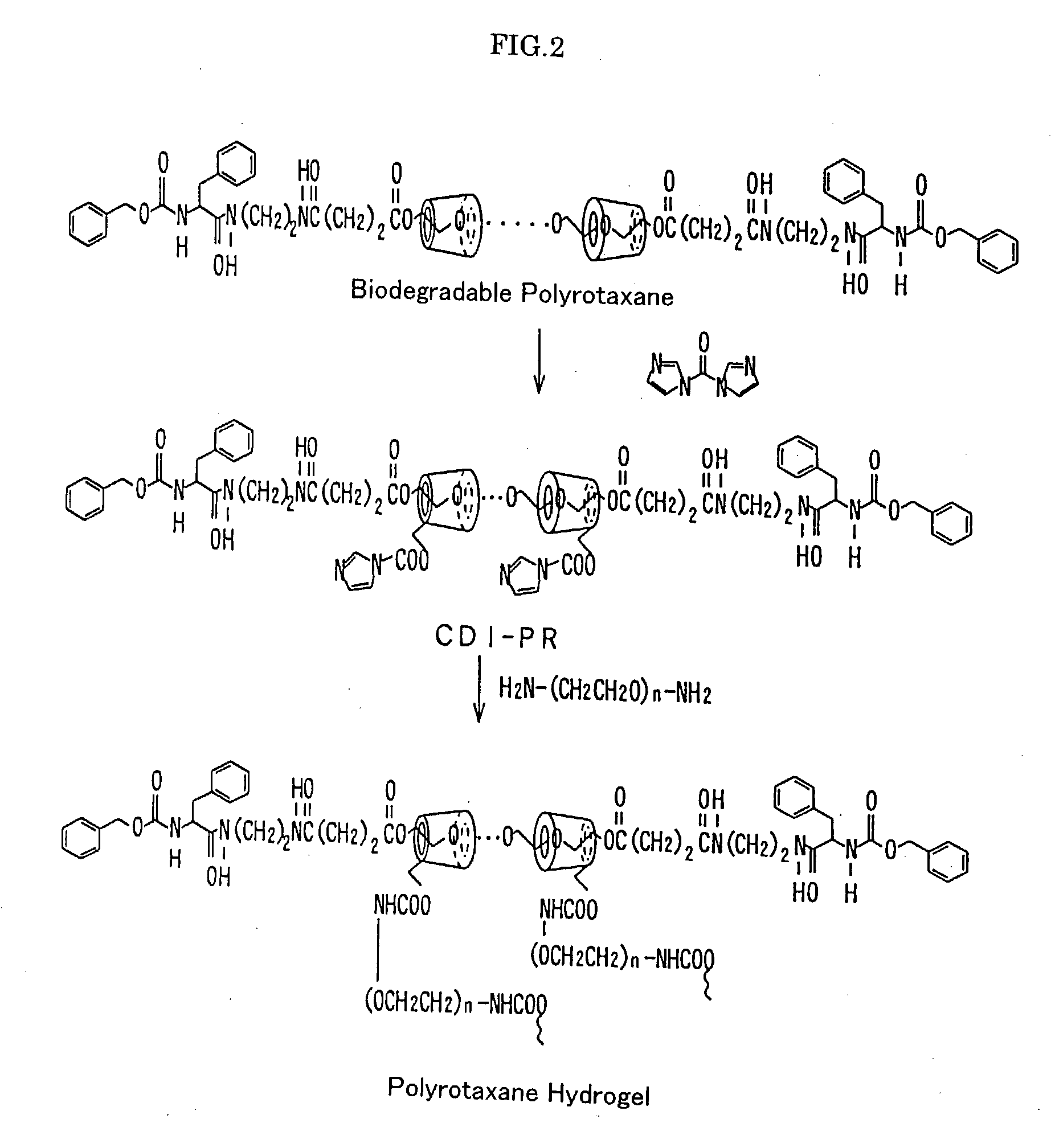Base material for tissue reconstruction, implantable material, and methods of preparing the same
a tissue and implantable material technology, applied in the field of tissue reconstruction and implantable materials, can solve the problems of affecting the decomposition and disappearance time, affecting the decomposition and disappearance of polyrotaxane or polyrotaxane hydrogels, and provoking inflammation of such products
- Summary
- Abstract
- Description
- Claims
- Application Information
AI Technical Summary
Benefits of technology
Problems solved by technology
Method used
Image
Examples
Embodiment Construction
[0049] Preferable examples of the invention are discussed below, although the invention is not at all restricted to these examples.
[0050] (1) Synthesis of Biodegradable Polyrotaxane (see FIG. 1)
[0051] (1-1) Synthesis of PEG Having Amino Groups on both Terminals
[0052] Polyethylene glycol (PEG) (33 g, 10 mmol) having a molecular weight of 3,300 and succinic anhydride (20 g, 200 mmol) were dissolved in toluene (220 ml). The resulting solution was refluxed at 150.degree. C. for 5 hours. On completion of the reaction, the solution was poured into an excess of diethyl ether, was filtered, and was dried under reduced pressure. A crude product thus obtained was dissolved in dichloromethane. After removal of an insoluble substance by centrifugation, the solution was poured into an excess of diethyl ether, was filtered, and was dried under reduced pressure. This gave the PEG having carboxyl groups on both terminals thereof (compound A) as white powder.
[0053] The compound A (20 g, 5.7 mmol) an...
PUM
| Property | Measurement | Unit |
|---|---|---|
| Structure | aaaaa | aaaaa |
| Molecular weight | aaaaa | aaaaa |
| Mechanical properties | aaaaa | aaaaa |
Abstract
Description
Claims
Application Information
 Login to View More
Login to View More - R&D
- Intellectual Property
- Life Sciences
- Materials
- Tech Scout
- Unparalleled Data Quality
- Higher Quality Content
- 60% Fewer Hallucinations
Browse by: Latest US Patents, China's latest patents, Technical Efficacy Thesaurus, Application Domain, Technology Topic, Popular Technical Reports.
© 2025 PatSnap. All rights reserved.Legal|Privacy policy|Modern Slavery Act Transparency Statement|Sitemap|About US| Contact US: help@patsnap.com



